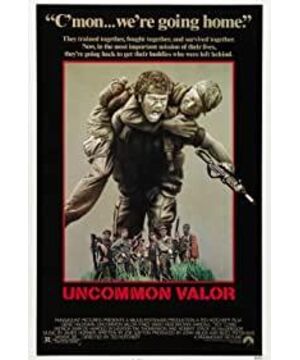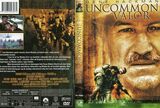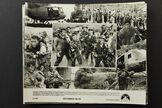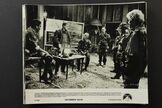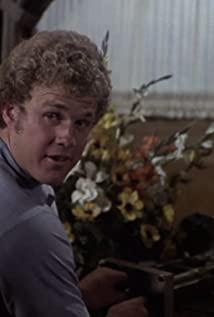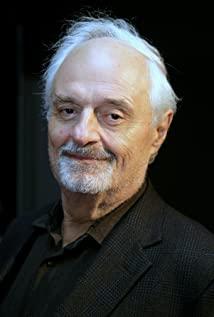The official translation of the Red Army's Long March, The Long March.
My own preferred translation, Uncommon Valor, Extraordinary Courage.
Today's recommended American movie, "Uncommon Valor", is going straight.
The film "Long March" tells the story of a father's Long March.
Colonel Rhodes spent 10 years traveling from his home in Texas to the rice fields in Cambodia to rescue his son, Frank, an American soldier captured during the Vietnam War.
The film analyzes his Long March tactics in eight steps.
The first step is to set goals.
Live to save people, die to give up.
As long as his heart is not dead, he must save his son.
The second step is to find the government.
Frank is an American soldier, and the government has a responsibility to rescue his soldiers.
The official strategy is to negotiate to exchange prisoners of war. This strategy is just to satisfy the political show, get a few people back, and the politicians get the votes, and they no longer care about missing prisoners of war.
The third step is to find allies.
One of Frank's comrades also disappeared.
His father was an oil tycoon, rich, and would rather spend his fortune than see his son again.
The fourth step is to find information.
Colonel Rhodes, money makes way.
A large number of Frank's photos were distributed, and the masses in Thailand and Cambodia were mobilized to find clues.
The fifth step is to make a plan.
Based on military satellite images, a well-thought-out combat plan was drawn up.
He drove straight in, attacked the prisoner of war camp, and rescued his son.
The sixth step is to select volunteers.
Colonel Rhodes selected 6 volunteers and formed an assault team.
Five of the veterans were Frank's Vietnam War comrades, and one recruit was a Vietnam War orphan.
The seventh step is simulation training.
The oil tycoon funded a 1:1 model of a prisoner of war camp in Texas.
Colonel Rhodes + 6 volunteers + 1 sponsor, 8 people started actual combat simulation training. (So, "Uncommon Valor" is also translated into "Eight Flood Dragons")
The eighth step, do it.
The whole film takes 105 minutes, 90 minutes for overcoming difficulties, 10 minutes for real work, 9:1, and 90% for those who travel a hundred miles.
After paying the cost of the lives of 2 volunteers, 4 American prisoners of war were rescued.
After watching:
1. The Long March is too difficult. Only goals, no timetables. No one knows, how long will it take?
2. The Long March can only be a volunteer army. Mercenaries, no fun.
3. The Long March is not afraid of slowness and chaos. In real history, the bloody battle of Xiangjiang River is rooted in "chaos".
4. On the Long March, it is easy to shout slogans. One step, two steps, three steps, four steps, five steps, six steps, seven steps and eight steps. Only by sticking to the correct tactics at every step can you "Drive Straight"
5. In the Long March, no matter how great the strategy and the correct tactics, the individual results of each participant are uncertain.
Are there subtitles for the victims of "Blood Battle of Xiangjiang"?
View more about Uncommon Valor reviews


